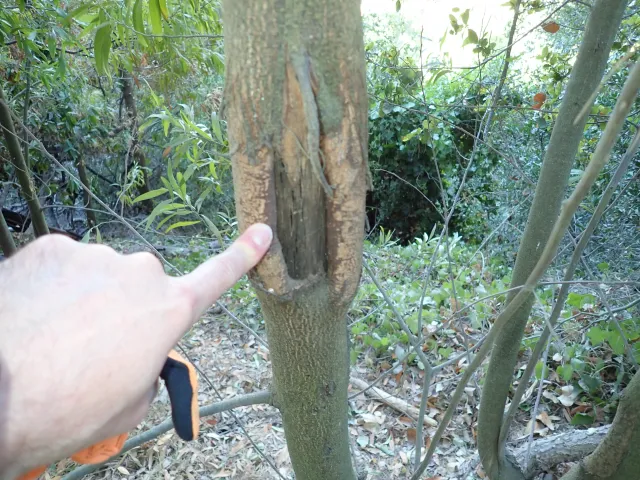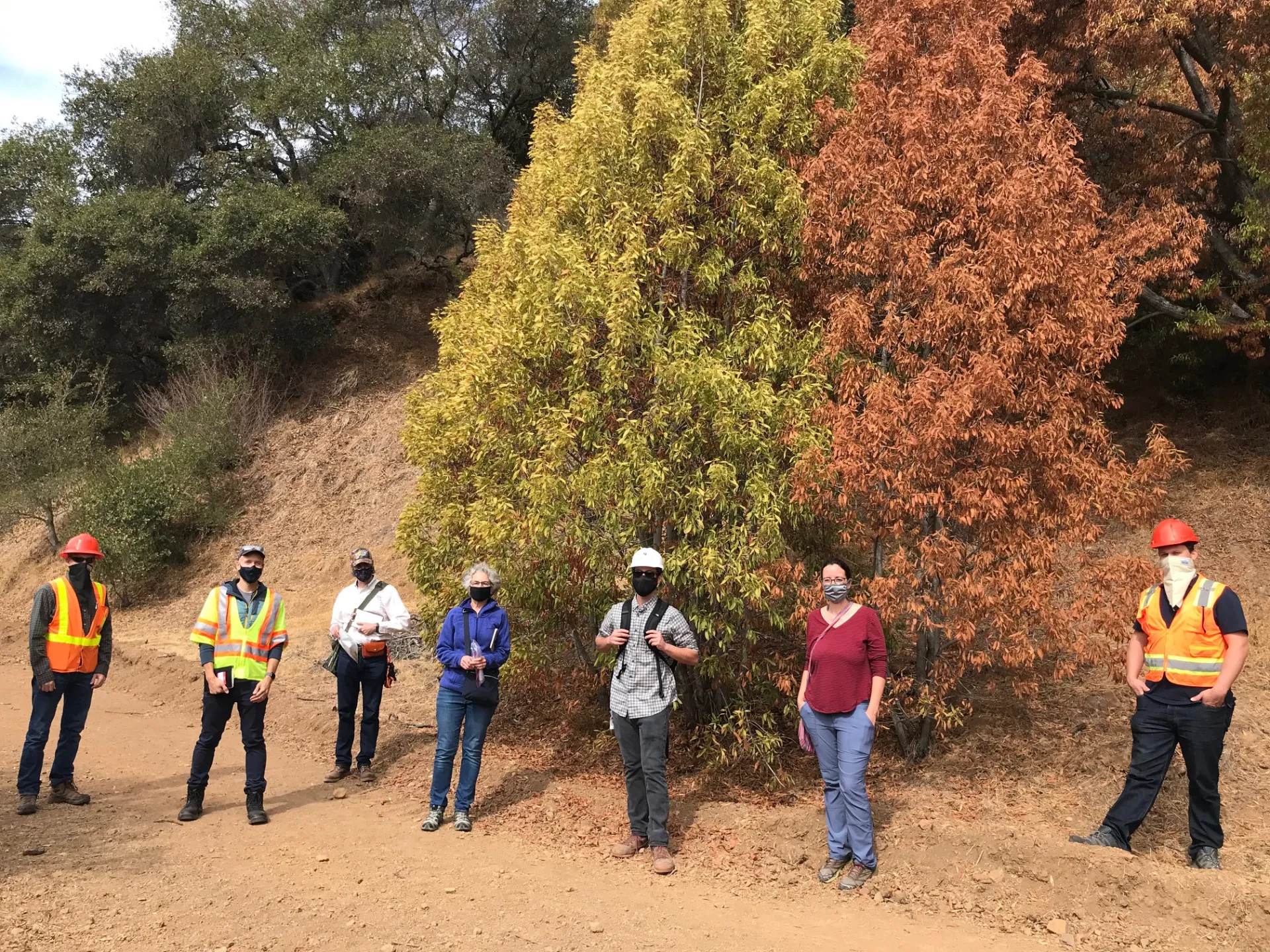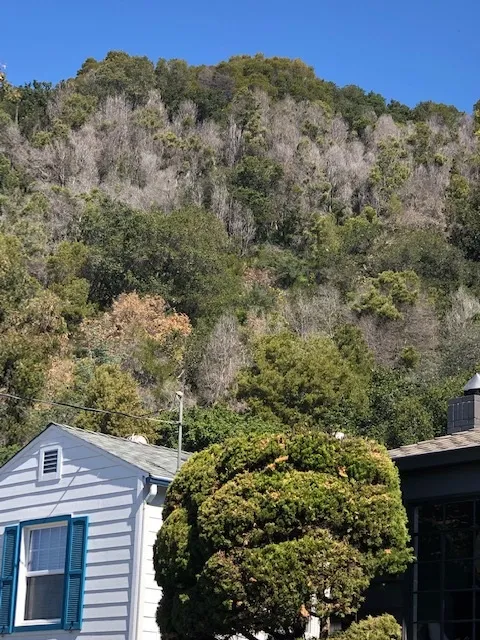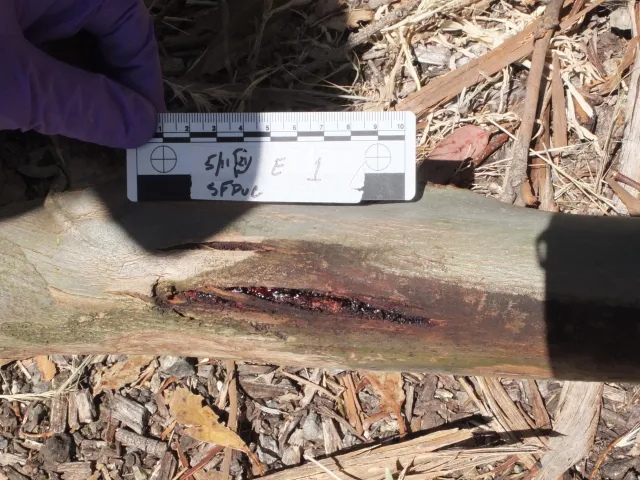Climate, diseases driving death of several tree species in multiple California regions

Plant pathogens and pests, urbanization and climate change are shifting the natural range of California trees
The trees that beautify California landscapes and provide food, shade and many other benefits are under attack by fungi that are increasingly causing trees to decline and die, according to a new study led by University of California Agriculture and Natural Resources scientists.
“This paper is kind of a turning point in our understanding of major drivers responsible for changing our landscape as climate changes,” said lead author of the study Matteo Garbelotto, UC Cooperative Extension forest pathology specialist in UC Berkeley’s Department of Environmental Science, Policy and Management.
“It is also a wonderful example of how collaboration between county-based UCCE advisors, landowners and campus-based researchers provides a powerful and unrivaled approach for early detection of new threats to plants at a large geographic scale,” Garbelotto added.
In the early 2000s, concerned landowners and land managers began reporting a rising number of sick and dying trees around California. They saw the rapid decline and death of grey pines and blue oaks in the Sierra Nevada foothills. Others observed the dieback of several manzanita species along the Northern California coast. And there was also the death and dieback of California bay laurels and tanoaks in the San Francisco Bay Area woodlands.
While some people suspect climate change is to blame for the tree deaths, it may not be the sole culprit, according to the study published in the journal Plant Pathology. Research shows latent pathogens in changing landscapes are harming trees, and in one case the scientists found that climate alone could play a significant role.

From 2019 through 2024, UC scientists hiked through woodlands collecting samples of trees. They found 10 woody plant species in six regions of California that had succumbed to infections by nine fungal species.
Garbelotto and his fellow researchers found that trees are being killed by latent pathogens – microorganisms that infect a tree but lay dormant as silent members of the plant microbiome without actively causing disease or symptoms, until they are activated by something like drought-stress in trees.
“The paper proves that latent pathogens are really driving tree decline and climate alone is not responsible – yet – for the dieback,” said Garbelotto. “This has been a long conversation in professional circles and some people still do not believe these latent pathogens really play a role, but our data show and prove they do. We now provide evidence that in areas affected by climate change these often-native latent pathogens can be as problematic as nonnative and invasive introduced pathogens.”

These large-scale tree diebacks may be alarming to nature lovers and landowners, so Garbelotto hopes the study will enlighten people on the cause. “Understanding why this is happening can help direct land managers and landowners in the right direction, avoiding waste of resources by focusing on what really matters,” he said.
For mature urban trees, land managers should keep in mind the importance of water, said study co-author Igor Lacan, UC Cooperative Extension urban forestry advisor for the Bay Area.
“This study strongly suggests that drought-stressed trees are much more susceptible to these latent pathogens,” Lacan said. “For individual high-value trees, providing water is the most important disease prevention or disease management strategy during an extended dry period.”
As the climate warms, many trees are no longer growing in their preferred climate zones.
“Invasive pathogens and pests, urbanization, climate change alone and latent pathogens all will play a role in changing the natural range of plants in California and worldwide,” Garbelotto said.
“It is like ‘chronicle of a death foretold,’” he said. “All of the tree and shrub species affected are growing at the ecological edge of where they would be comfortable. As they cross that edge, they become susceptible to latent pathogens.”

When considering trees species to plant, Garbelotto advises landscapers and land managers to prepare for the changing climate. He recommends choosing native species that are suitable not only for current conditions, but for future warmer and drier conditions.
“We have to stop planting exotics because finding a perfect climatic match for exotics is becoming even more tenuous as the climate changes rapidly,” he explained. “Our study shows that in the case of bluegums, climate itself is the major driver of the observed decline.”
Native species like bay laurels and tanoaks are growing where they should not be growing because of fire exclusion, he said, noting that infection by latent pathogens indicates these trees are not growing in suitable sites.
“For species like manzanitas and blue oaks, the problem is more significant,” Garbelotto said, “because it suggests the natural range of these species may have to shift. The California natural landscape is changing, and latent pathogens are changing it together with other drivers.”
The tree study was funded by the East Bay Regional Parks Foundation, the San Francisco Public Utilities Commission and the U.S. Forest Service.
The article, In California's Changing Climate, Latent Pathogens Drive Novel Woody Plant Diebacks on a Large Geographic Scale, is co-authored by Garbelotto; Edoardo Scali, Ph.D. candidate at UC Berkeley; Steven Swain, late UC Cooperative Extension environmental horticulture advisor; Lacan; Daniel Macon, UCCE livestock and natural resources advisor; Douglas Schmidt, UC Berkeley research associate; Tina Popenuck, UC Berkeley research associate; Ilaria Martino, University of Turin postdoctoral researcher; and Vladimiro Guarnaccia, University of Turin associate professor of plant pathology.
The paper is available at https://bsppjournals.onlinelibrary.wiley.com/doi/10.1111/ppa.70041.
